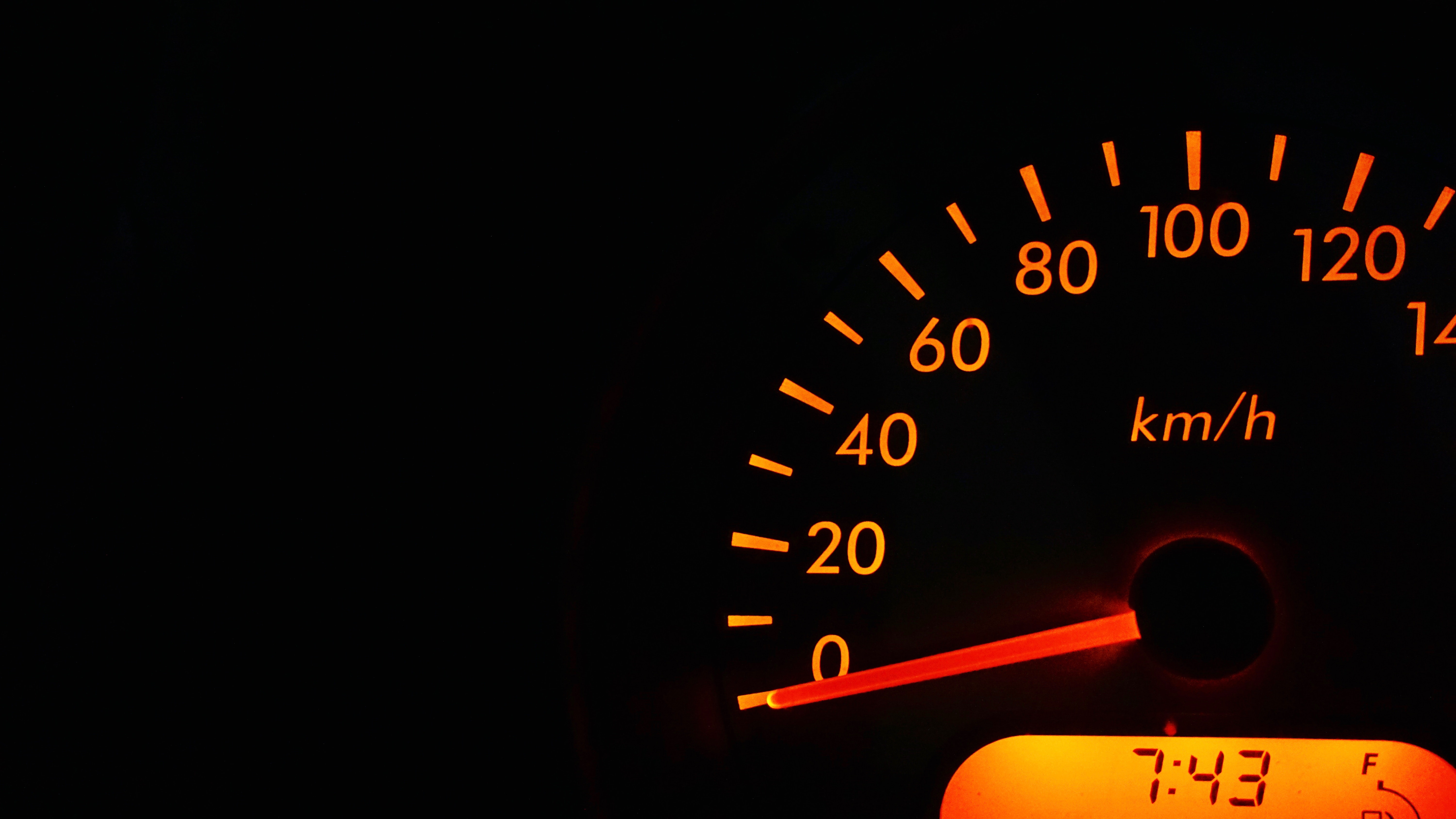Concepts of time and distance with the conversion of units and their formulas are discussed below.
Speed
Speed of an object is the distance covered by it in a unit time interval.
\begin{align*}
Speed=\left[ \dfrac {Distance \ Travelled}{Time \ Taken}\right] \end{align*}
Units of measurement are km/h, m/s i, e kilometer per hour, meter per second respectively.
Conversion Of Units For Time And Distance Concepts
\begin{align*} One \ kilometer \ per \ hour = \dfrac {5}{18} \ m/\sec \end{align*}
\begin{align*} One \ meter \ per \ second= \dfrac {18}{5} \ km/\ hour
\end{align*}
Formulas of Time and Distance Concepts
1. \begin{align*}
Speed=\dfrac {Distance}{Time} \\ \\ (or) \\ \\ Time=\dfrac {Distance}{Speed} \\ \\ (or) \\ \\ Distance=Speed\times Time \end{align*}
2. \begin{align*} Average \ Speed=\dfrac {Total \ Distance}{Total \ Time}
\end{align*}
3. Let a man travels different distances d1,d2,d3………and so on in different times t1,t2,t3………. respectively then, \begin{align*}
Average \ Speed =\dfrac {Distance \ Travelled}{Time \ Taken} \\ \\ = \left[ \dfrac {\left( d_{1}+d_{2}+d_{3}+\ldots \right) }{\left( t_{1}+t_{2}+t_{3}+\ldots \right) }\right] km/h. \end{align*}
4. Let a man travels different distances d1,d2,d3………and so on with different speeds s1,s2,s3………. respectively then,
Average speed (km/h)\begin{align*} =\begin{bmatrix} d_{1}+d_{2}+d_{3}+\ldots \\ \overline {\left( \dfrac {d_{1}}{s_{1}}\right) +\left( \dfrac {d_{2}}{s_{2}}\right) +\left( \dfrac {d_{3}}{s_{3}}\right) }+\dots \end{bmatrix} \end{align*}
5. Let A goes from P to Q at a speed of s1 km/h and returns from Q to P at s2 km/hr speed then,
the average speed during the whole journey is \begin{align*} \left[ \dfrac {2S_{1}S_{2}}{S_{1}+S_{2}}\right]km/h. \end{align*}
7. Let A travels at a constant speed and covers distance d1 in t1 time and d2 distance in t2 time then,
\begin{align*} d_{1}\times t_{2}=d_{2}\times t_{1} \end{align*}
8. Let A increases its speed from X km/h to Y km/h to cover a distance in t2 hours in place of t1 hours then
Distance
\begin{align*}
\left[ \dfrac { Product \ of Speeds }{ Difference \ in \ Speeds }\right] \times \begin{bmatrix} Change \\ in \\ Time \end{bmatrix}\end{align*}
\begin{align*} =\left[ \dfrac {xy}{\left( x-y\right) }\right] \left( t_{2}-t_{1}\right)km. \end{align*}
9. Let A travels at a speed of s1 and reaches his destination t1 hours late but when he travels with a speed of s2 he reaches his destination t2 hours before then,
the distance between two places is \begin{align*} \left[ \dfrac {S_{1}\times S_{2}\times \left( t_{1}+t_{2}\right) }{\left( S_{2}-S_{1}\right) }\right]. \end{align*}
10. Let two persons A and B starting at the same time from points P and Q towards each other, crosses each other at a point and they take t1 hours and t2 hours to reach the points Q and P respectively then, \begin{align*}
\dfrac {A’s \ Speed}{B’s \ Speed}=\sqrt {\dfrac {t_{2}}{t_{1}}}.
\end{align*}
11. Let A’s new speed is x/y of the original speed, then
the change in time taken to cover the same distance \begin{align*} \left[ \left( \dfrac {b}{a}\right) -1\right] \times Original \ time. \end{align*}
12. Let A covers a 1/x part of the distance with speed s1, 1/y part with s2, and 1/z part with s3 k/h and so on then,
the average speed to cover the whole distance is \begin{align*} \dfrac {1}{\left( \dfrac {1}{xs_{1}}\right) +\left( \dfrac {1}{ys_{2}}\right) +\left( \dfrac {1}{zs_{3}}\right) +\ldots }. \end{align*}
13. Relative speed
- Let A and B run in opposite directions then, the relative speed is the sum of their speeds.
- When A and B run in the same directions then relative speed is the Difference of their speeds.
- Time taken by A and B to meet is
\begin{align*} \dfrac {Distance \ between \ them}{Relative \ speed}. \end{align*}
14. Let A overtakes or follows B then
the time taken to catch B is \begin{align*} \dfrac {Distance \ between \ them}{Relative \ speed} \\ \\ (or) \\ \\ \left[ \dfrac {\left( speed \ of \ B \right) \times time}{Difference of speeds }\right]
\end{align*}
15. Let there is n number of poles which are at a distance of X meters apart from each other than, then
the distance between first and last pole is \begin{align*} \left( n-1\right) X.
\end{align*}







